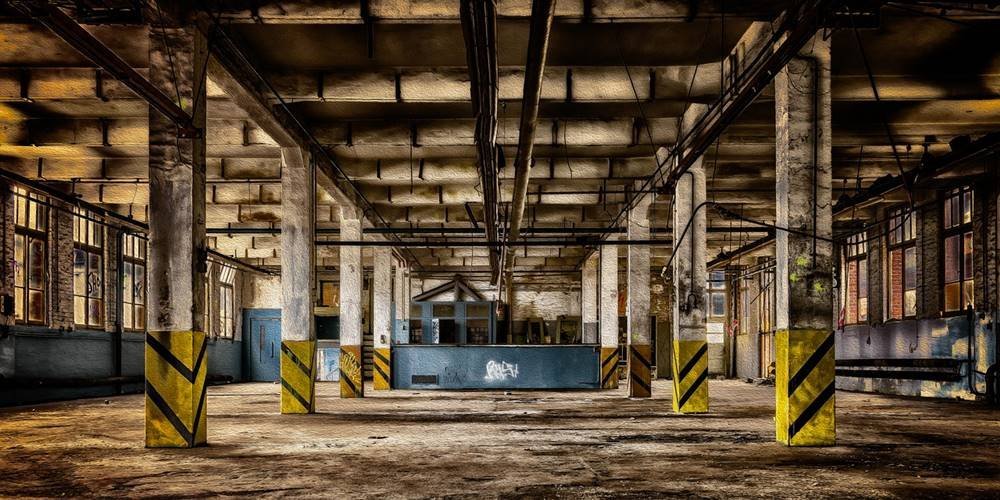The Future of the Industrial Real Estate Market in California

Real estate trends constantly change, and certain markets can see a sudden surge in popularity. Although the global pandemic has shown signs of slowing down, there is still a ways to go; it has undoubtedly affected the real estate market. In the residential sector, we’ve seen interest spike for rural areas, and many people have sought second homes away from the busy city life.
On the other hand, the industrial sector has been growing without any intention of stopping. This inspired us to take a closer look at the future of the industrial real estate market in California.
What is industrial real estate?
Firstly, let’s get a few things straight so that we are on the same page. People sometimes have trouble telling the difference between industrial and warehouse properties. In short, industrial spaces can include warehouses; however, their scope is much broader.
Industrial spaces are where businesses can manufacture, assemble and store their products, but they also include logistics spaces that support production. It’s not all about production since industrial spaces can also have offices and places to hold meetings.
Different types of industrial real estate
Sometimes not as breathtaking as glistening metal and glass skyscrapers, industrial spaces are the backbone of the economy. Understanding the most common types of industrial real estate can help you make the correct choices for your company. Do some research on what exists and what kind of property is right for your needs. Size might be a relevant factor for one type of property, while location can be the deal-breaker for another. Here are the types of industrial properties that are the most prevalent:
- Light manufacturing makes various products for consumers and businesses.
- Heavy manufacturing facilities are used for the production of heavy-duty goods and materials.
- Various storage facilities, which commonly include: warehouses, sorting and distribution centers, and temperature-controlled cold storage.
- Flex spaces that serve multiple different purposes, like offices, showrooms, data centers, etc.
[newsletter]
The need for storage is on the rise
Needless to say, but the pandemic has disrupted industry on a global scale. Everything from production to shipping and distribution on both the global and local markets has needed to find a new way to function. If change is on the horizon, then what can we expect from the future of the industrial real estate market in California?
ne thing is for sure: storage facilities and warehouses have gone up in demand. Due to the delays in production and the trouble of securing shipping, we have seen an increased need for storage. If you run any kind of business that deals with physical products, you will need a secure facility for your items. These trends aren’t going away anytime soon, so if you are looking for an investment property, storage facilities could be the way to go.
E-commerce has shown growth
It’s safe to assume that people will maintain their online habits even after the pandemic is over. Online shopping has become the norm. Items that were traditionally always purchased in person, like groceries, are now available through online outlets. People are embracing innovation, and the real estate market is reflecting this trend. By far, the hottest new trend is dropshipping, and everyone is trying to jump in on it.
Dropshipping is a fulfillment method for online purchases where the store doesn’t handle the product. The items are instead shipped to the buyer from a third party. What does this mean for the future of the industrial real estate market in California? Although dropship resellers don’t need storage themselves, they need to rely on plenty of third-party services. Warehouses and distribution centers are necessary for the business to function, meaning they are bound to see increased interest in the future.
Small industrial properties are all the rage
As we’ve discussed previously, the shift to online markets is affecting how business is done. It’s transforming what kinds of industrial real estate will be in demand in order for online companies to prosper. Since online sales have exploded, many companies have tried to offer their services online, only to face stiff competition. One way to get a leg up is by reducing delivery times. That requires a dense industrial structure to keep delivery times short, especially in populated areas like California.
When most people think of industrial property, they imagine a large, almost endless warehouse. However, that’s not the future of the industrial real estate market in California. Paying for large spaces is expensive, which is giving way to small facilities, which are cheaper and easier to maintain. They are also perfect for supporting dense distribution networks and keeping the delivery times low.

Overseas production will slowly return to the US
For decades, the entire world has slowly outsourced its production to China. But after the pandemic hit, we saw delays in every aspect of the production process. Having all of your necessary goods produced halfway around the world proved difficult amid endless delays. It almost felt like production for everyone was held hostage by one county’s ability to recover from the coronavirus pandemic.
Many producers of essential goods are now rethinking their international approach. The long-term plan for companies is to roll back at least part of their production back to the US. As a result, we will have a renewed interest in large factory spaces. However, this is easier said than done, as it requires specialized personnel and not just appropriate real estate.
Of course, outsourcing will still be a thing, and shipping ports will be needed for a long time. Thankfully, California is in the perfect spot since most western US ports are located here.
The bottom line
During the real estate fluctuations caused by the pandemic, the market for industrial spaces proved to be resilient. Interest which was already strong, only continued to grow. This only served to confirm that the future of the industrial real estate market in California was promising. Regardless if you are a developer, property owner, or investor – now might be the perfect time to consider backing industrial and commercial spaces.




